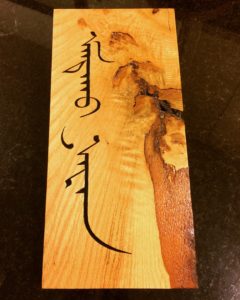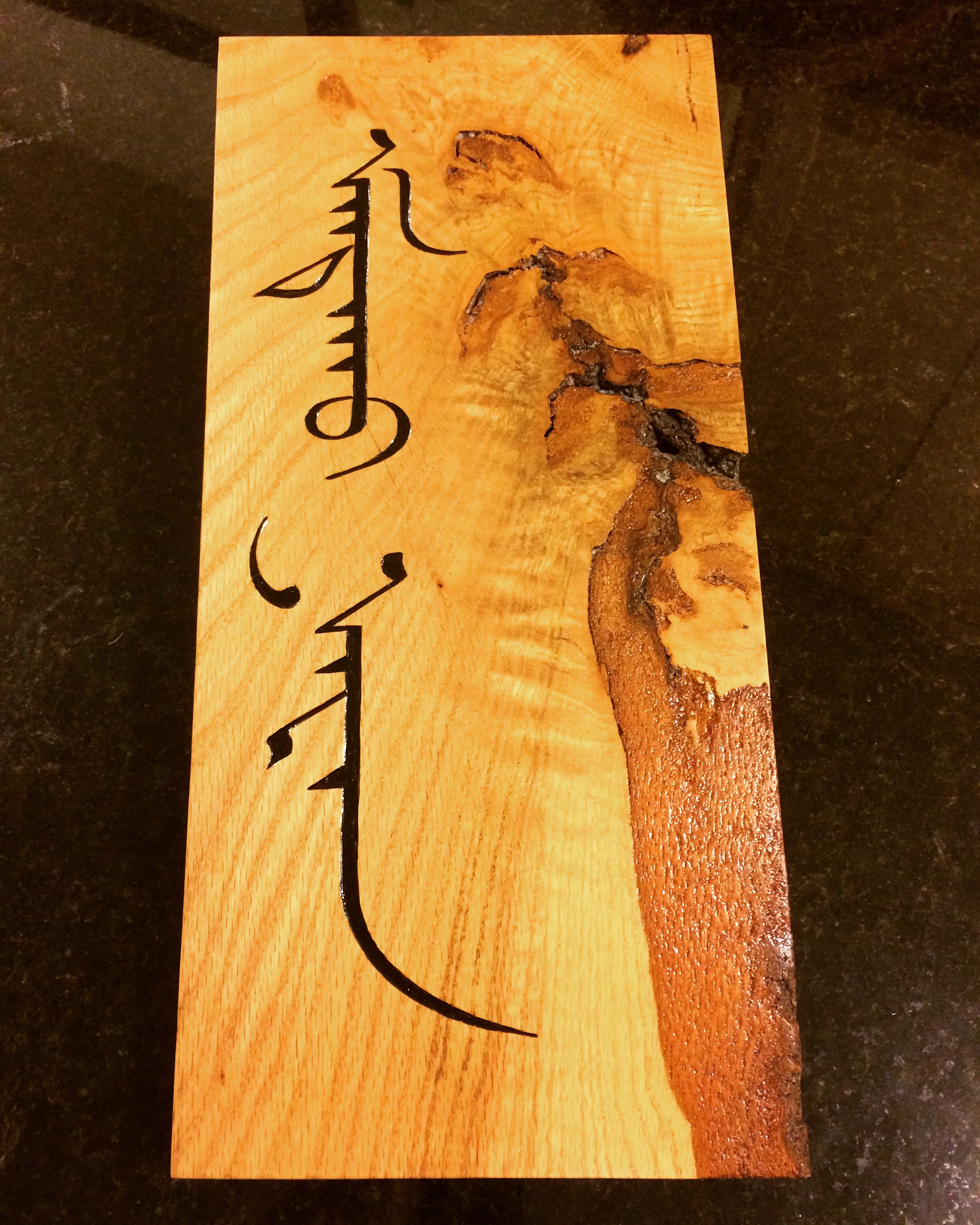What does “endangered” mean?

At the end of my recent Kickstarter campaign I posted a photo of a carving I had been working on over the last 48 hours, which read “Sunrise” in classic Mongolian vertical bichig script.
My Facebook friend Kellar Alsup asked me why I carve anything in bichig script, given that it has official recognition in Inner Mongolia and has at least a million users. In what sense, he asked, is it an endangered alphabet?
This was a very good question, I realized, because it made me realize that my definition of “endangered” has changed over the six years of the project, following a shift in my intentions for the Endangered Alphabets, and it made me put that change into words for the first time.
At first, I admit, I was operating largely out of ignorance. I have the greatest respect for those involved in the endangered languages movement and their diligent field research, but I didn’t have the time, the money, the training or the institutional support to work like them, so I was working on guesswork and good intentions.
As a general guideline, when I read on Omniglot that a script was no longer used for official purposes nor taught in schools, I thought of it as endangered—still a useful rule of thumb, I think. My first carvings were simply intended to document and display such scripts.
When I read that bichig had largely been replaced in Russia by Cyrillic and in China with Chinese, I knew so little about Mongolia I assumed that bichig was generally falling out of use. I also confused it, to some degree, with Manchu, a similar script that was almost extinct.
To be honest I loved the script so much, and I was looking for opportunities to carve vertical scripts to add variety to the standard horizontals, that I didn’t research the situation as closely as I might. It was also much harder to come by such information six years ago. You have no idea how much more available information has become even in the past two years.
Al this changed maybe two and a half years ago when I was contacted by a young woman named Zulaa from Ulaan Baatar, who sent me some Mongolian calligraphy to carve. It says something about the changing times that she herself didn’t know who the calligrapher was; it took me years to identify him as Sukhbaatar. But as a result I gradually became aware of the emerging art using bichig script, at first through Pinterest and then more generally.
At the same time, even though I barely recognized it because it was happening so gradually, the purpose and even the definition of the Endangered Alphabets began to change.
Over the last four years, initially thanks to my work with Maung Nyeu and Our Golden Hour in Bangladesh, my role has become less passive and more active, and that changed my way of thinking.
Nowadays I see it as my job to champion and highlight the identities of minorities and indigenous peoples, mostly by making art out of their scripts.
And in that sense I’m happy to turn people’s attention to Mongolia in general, to Mongolian culture and most specifically to Mongolian calligraphy, which I love. It’s no surprise it has been designated as a World Intangible Heritage.
I’ve come to believe a culture and/or its script doesn’t have to be on the verge of extinction to be fascinating and worth propping up to the extent I can help. The spread of globalism and the international culture means that even a nation with a million users of its traditional script is likely to veer toward aspects of global culture, as you see for example in Bangladesh, where TV ads are half in English. (It’s like in Europe, and the spread of what I think of as Elf culture: you see Elf stations everywhere, and as soon as you see one you no longer know where you are.)
So local/regional/minority cultures are never safe, and the more I can highlight them, the better, as I see it.
As always, I welcome your thoughts. You can take it for granted that I generally know far less than I seem to, and will gain by hearing from those of you who are better informed.


August 12, 2016 @ 12:10 am
Very interesting post in light of the connection between the Mongolian script, the ancient Uighur language and alphabet, and today’s Sarigh Yughur nationality of Sunan Yughur Autonomous County, Gansu, China. This alphabet is no longer used by the Yughurs, and their language is considered unwritten. Although the Yughur Culture office of Sunan has devised a Romanized script for them, the new script has not been popularized. Nevertheless, the Sarygh Yughur word for “book” (puchig) is quite similar to “bichig”.
August 22, 2016 @ 9:11 pm
Hi Tim
I was introduced today to your work by Anastasia Mo. I’d never heard of Mongolian vertical bichig script. It is so beautiful! Thanks.
I’d love to have a go at it with my beach calligraphy. It looks very well suited to the medium.